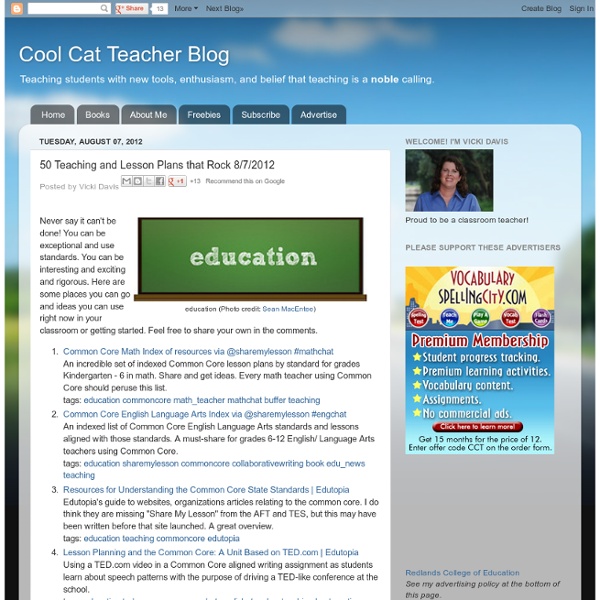



Virtual Labs Created by Glencoe Many of these labs allow students to test multiple variables. Caution: the journal and data entry sections of the simulations do not work, so you probably will want to arrange for students to write these on their own pages. Many of these labs are useful to substitute for activities in the class that are too costly, dangerous, or time consuming. Life Science How do animal and plant cells work? Earth Science Physical Science How does thermal energy affect the state of a substance?
iPad and STEM Resources I reached out looking for apps that would support STEM in high school and middle school to our Apple representatives and WOW did they come through! I took the emails and brought them here to share! Thanks Mike and Adair!! Solving the STEM Education Crisis from eSchool News Cathleen Richardson’s site: And click on “Macs and STEM” From the Apple iTunes App Store Apps for Learning Life Science ADE Apps Recommendation Lists (ADE – Apple Distinguished Educators) Free Educational Apps List from ADE Cathleen Richardson – Other Apps Lists At the 2010 Texas Computer Educator Assn. ScienceDaily: News, Videos & Articles in Science, Health, Technology & Environment PowerPoint Rubric University of Wisconsin - Stout — Schedule of Online Courses, Online Certificate Programs, and Graduate Degree Follow us on Facebook. This rubric may be used for self-assessment and peer feedback. PowerPoint Rubric * Primary sources can include original letters and diaries, personal observations, interviews, first-hand accounts, newspaper articles, magazine articles, journal articles, Web pages, audio recordings, video productions and photography. University of Wisconsin - Stout — Schedule of Online Courses, Online Certificate Programs, and Graduate Degree Readings on Authentic Assessment Examples of Other Rubrics
LinkEngineering - Homepage Common Core Lesson Plans Reviewed by Teachers Why Select Other Criteria? Sometimes you only have 45 minutes to review participles before Tuesday's assembly, or you need curriculum you know was reviewed after a certain date. Duration: If curriculum authors indicate how long it takes to implement a resource, i.e. a 30-minute vocabulary exercise, a three-day science experiment, or a two-week expository writing project, we note it for you. If not, our teacher reviewers may indicate an estimated amount of time it would take. When you select a duration in this box, you'll see only resources with that stated duration. Reviewed After: Limit the resources you see to those reviewed since the date you choose by clicking the box and making a selection.
PCCL | INTERACTIVE PHYSICS SIMULATIONS | HOME PAGE | Physics and Chemistry by a Clear Learning : free interactive physics animations | online learning for sciences | School support with interactive flash animations for lessons and corrected exercises. Ele Rules for Rubrics Rubrics make life easier. They take most of the subjectivity out of grading, and they give more feedback than just a number or check mark could. Unfortunately, not all rubrics are created equal. Rubrics are a communication tool between teachers and learners, which means they need to be written with the students as the audience. Use Your Standards It seems like a simple concept, but often teachers forget to align rubrics. Use Student-Friendly Language While teachers should be striving for the use of academic language in the classroom, there needs to be a scaffolding of your vocabulary, even in high school. Sometimes the best way to get student-friendly language is for your classes to create and use rubrics themselves. Less is More You don’t have to pack a textbook’s worth of instruction into your rubric squares. Reuse Your Rubrics While slight modifications are always necessary, try to keep your rubrics consistent throughout the year. Lesson Planet Resources: Critical Essay Research Writing